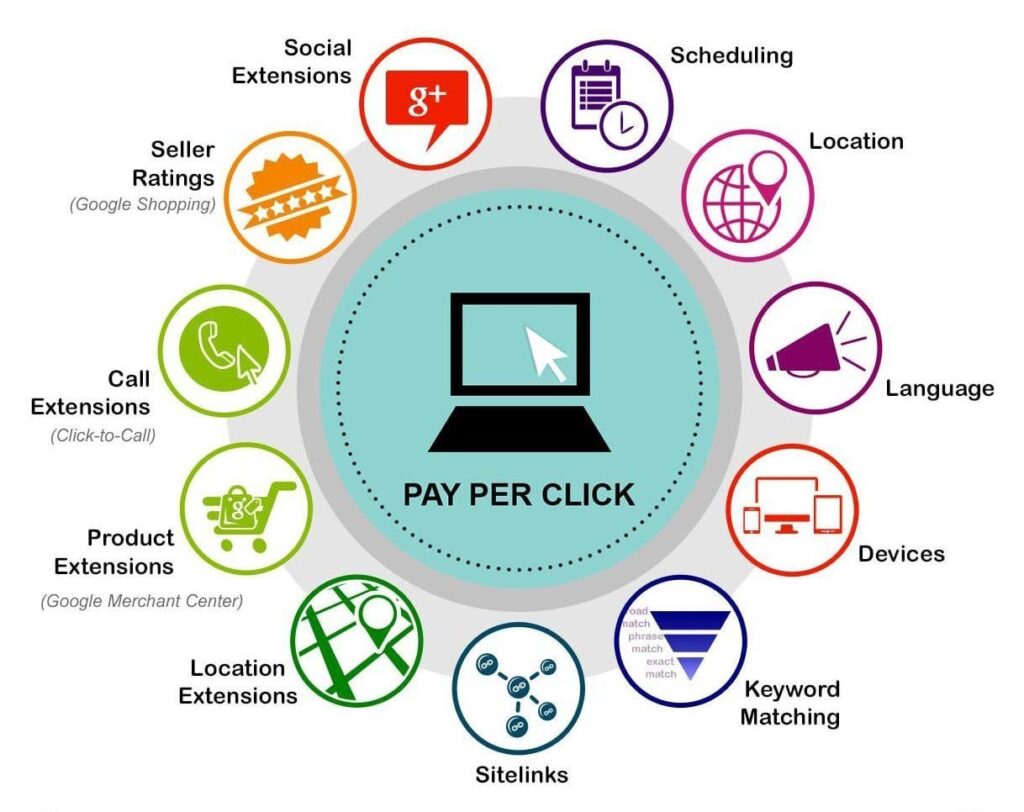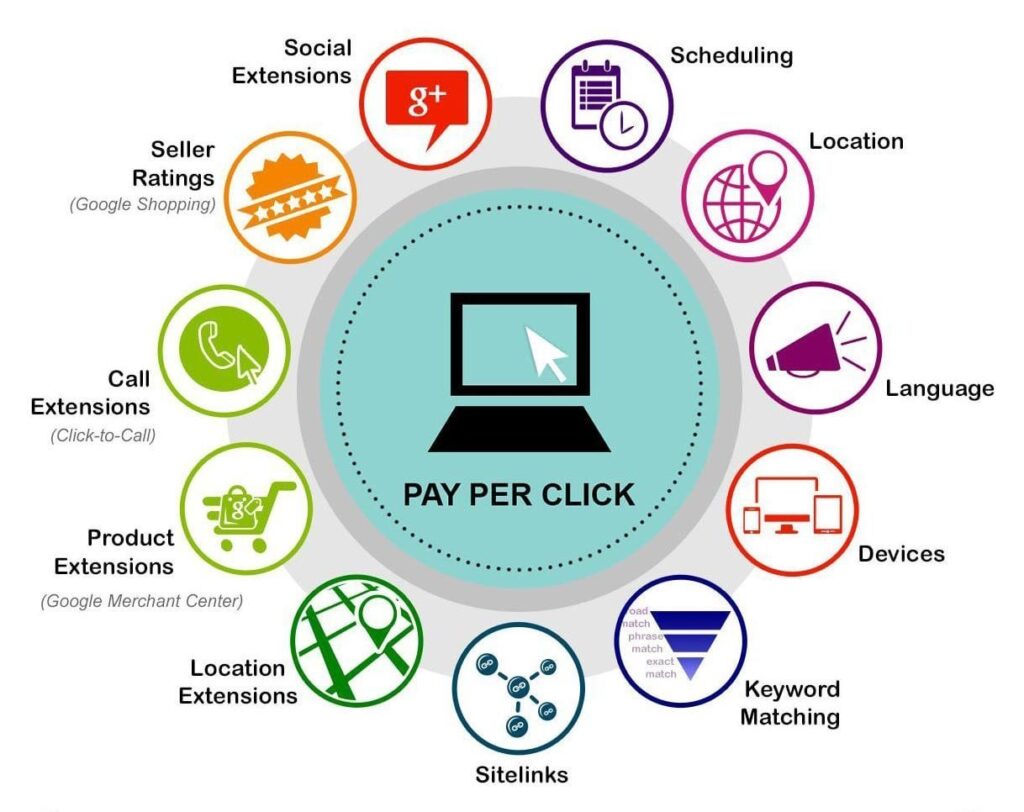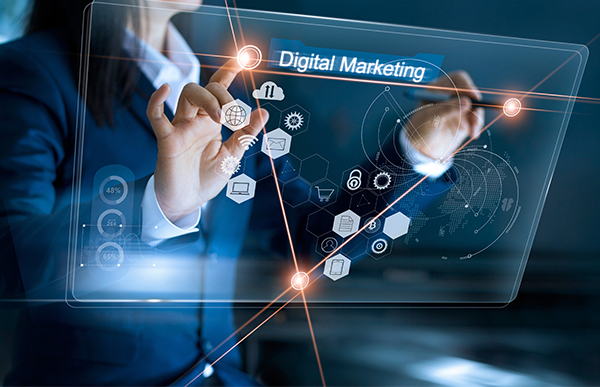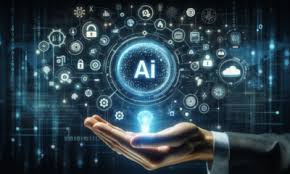✅ Main Channels of Digital Marketing
Digital marketing includes several online platforms or “channels” that businesses use to reach and engage their audience. Here are the main ones:
1. Search Engine Optimization (SEO)
- Improving your website to rank higher on search engines like Google.
- Focuses on organic (non-paid) traffic.
- Involves keywords, content, backlinks, technical SEO, etc.
2. Pay-Per-Click (PPC) Advertising
- You pay for ads to appear on platforms like Google Ads, Bing, or Facebook.
- You pay only when someone clicks on your ad.
- Common formats: search ads, display ads, shopping ads.

3. Content Marketing
- Creating and sharing valuable content (blogs, videos, infographics, etc.).
- Goal is to attract, inform, and convert your audience.
- Supports SEO and builds trust.
4. Social Media Marketing
- Promoting your brand on platforms like Facebook, Instagram, LinkedIn, X (Twitter), etc.
- Includes both organic posts and paid ads.
- Useful for brand awareness, engagement, and community building.

5. Email Marketing
- Sending targeted emails to a list of subscribers.
- Used for promotions, updates, nurturing leads, or customer retention.
- Very cost-effective when done right.
6. Affiliate Marketing
- Promoting products through third-party partners (affiliates) who earn a commission per sale or lead.
- Popular with influencers, bloggers, and YouTubers.
7. Influencer Marketing
- Partnering with influencers who promote your brand to their followers.
- Works well on Instagram, YouTube, TikTok, etc.
- Builds trust and visibility.
8. Mobile Marketing
- Reaching users through mobile apps, SMS, push notifications, or mobile-optimized sites.
- Growing due to the high use of smartphones.
9. Video Marketing
- Using platforms like YouTube, Instagram Reels, and TikTok to promote with videos.
- Highly engaging and effective for storytelling.
10. Online PR and Reputation Management
- Managing your brand’s presence on online news, blogs, forums, and reviews.
- Involves digital press releases and responding to reviews.
Main Channels of Digital Marketing (Detailed Explanation)
Digital marketing has transformed the way businesses connect with their audience. Unlike traditional marketing, which relies on offline methods such as print ads and TV commercials, digital marketing leverages online platforms to target and engage users in a more measurable and cost-effective way. Below are the main channels used in digital marketing:
1. Search Engine Optimization (SEO)
SEO is the process of optimizing your website to rank higher on search engine results pages (SERPs), such as Google or Bing. The goal is to increase organic (non-paid) traffic. SEO involves several key elements, including:
- On-page SEO: Optimizing content, meta tags, URLs, and keyword usage.
- Off-page SEO: Building backlinks from other high-quality websites.
- Technical SEO: Improving website speed, mobile-friendliness, and crawlability.
SEO is a long-term strategy, but it brings sustained and high-quality traffic if done correctly.
2. Pay-Per-Click Advertising (PPC)
PPC is a paid marketing model where advertisers pay a fee each time their ad is clicked. These ads appear on platforms like Google Ads, Bing Ads, and social media. Some types of PPC include:
- Search Ads: Shown above organic results when users search specific keywords.
- Display Ads: Image-based ads shown on websites within Google’s Display Network.
- Shopping Ads: Show products with images and prices directly in search results.
PPC delivers instant visibility and is great for targeted campaigns.

3. Content Marketing
Content marketing focuses on creating and sharing valuable content to attract, educate, and convert the audience. Types of content include:
- Blog posts
- Videos
- Infographics
- E-books
- Podcasts
This channel works hand-in-hand with SEO and builds trust with the audience over time. It’s also essential for lead generation and thought leadership.
4. Social Media Marketing
This involves promoting content and engaging with audiences on platforms like Facebook, Instagram, LinkedIn, Twitter (X), Pinterest, and TikTok. Social media marketing includes both:
- Organic marketing: Regular posts, stories, and engagement.
- Paid marketing: Targeted ads based on demographics, interests, and behavior.
This channel is effective for brand awareness, customer service, and building loyal communities.
5. Email Marketing
Email marketing is one of the most cost-effective channels. It involves sending emails to a list of subscribers to inform, educate, or promote. Types of emails include:
- Newsletters
- Promotional offers
- Product announcements
- Abandoned cart reminders
When personalized and automated, email marketing helps retain customers and increase sales.
6. Affiliate Marketing
In this model, businesses partner with affiliates (like bloggers or influencers) who promote their products in exchange for a commission. Affiliates use their own platforms (blogs, YouTube, etc.) to drive traffic and sales.
It’s performance-based and low-risk for the brand, since you only pay when a result (click, lead, or sale) occurs.
7. Influencer Marketing
Influencer marketing involves collaborating with individuals who have a strong following on social media or other platforms. These influencers promote your products through reviews, unboxings, or sponsored posts.
It builds trust quickly, especially when targeting a niche audience.
8. Mobile Marketing
With the rise of smartphone users, mobile marketing has become a vital channel. It includes:
- SMS marketing
- In-app advertising
- Push notifications
- Mobile-optimized websites
Mobile marketing ensures your content reaches users wherever they are, anytime.
9. Video Marketing
Video is one of the most engaging forms of content. Platforms like YouTube, Instagram Reels, and TikTok are powerful tools for digital marketers. Videos can explain products, share testimonials, or entertain.
People remember video content more than text, making it great for brand recall and engagement.
10. Online PR and Reputation Management
This channel involves managing how your brand appears online. It includes:
- Getting featured in digital news articles
- Reaching out to bloggers for reviews
- Handling negative comments and reviews on platforms like Google, Yelp, or Trustpilot
A good online reputation improves trust and influences buying decisions.
Conclusion
Each of these digital marketing channels plays a unique role in a complete marketing strategy. The best approach is to use a mix of these channels based on your goals, audience, and budget. By combining organic methods like SEO and content marketing with paid methods like PPC and social media ads, you can drive more traffic, leads, and sales effectively.

